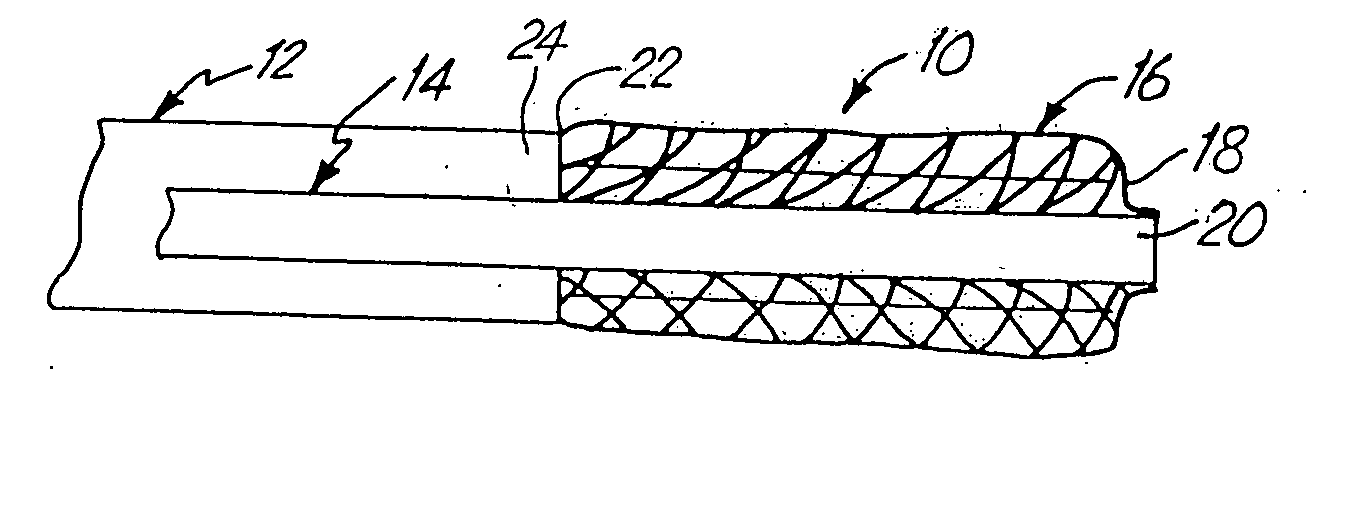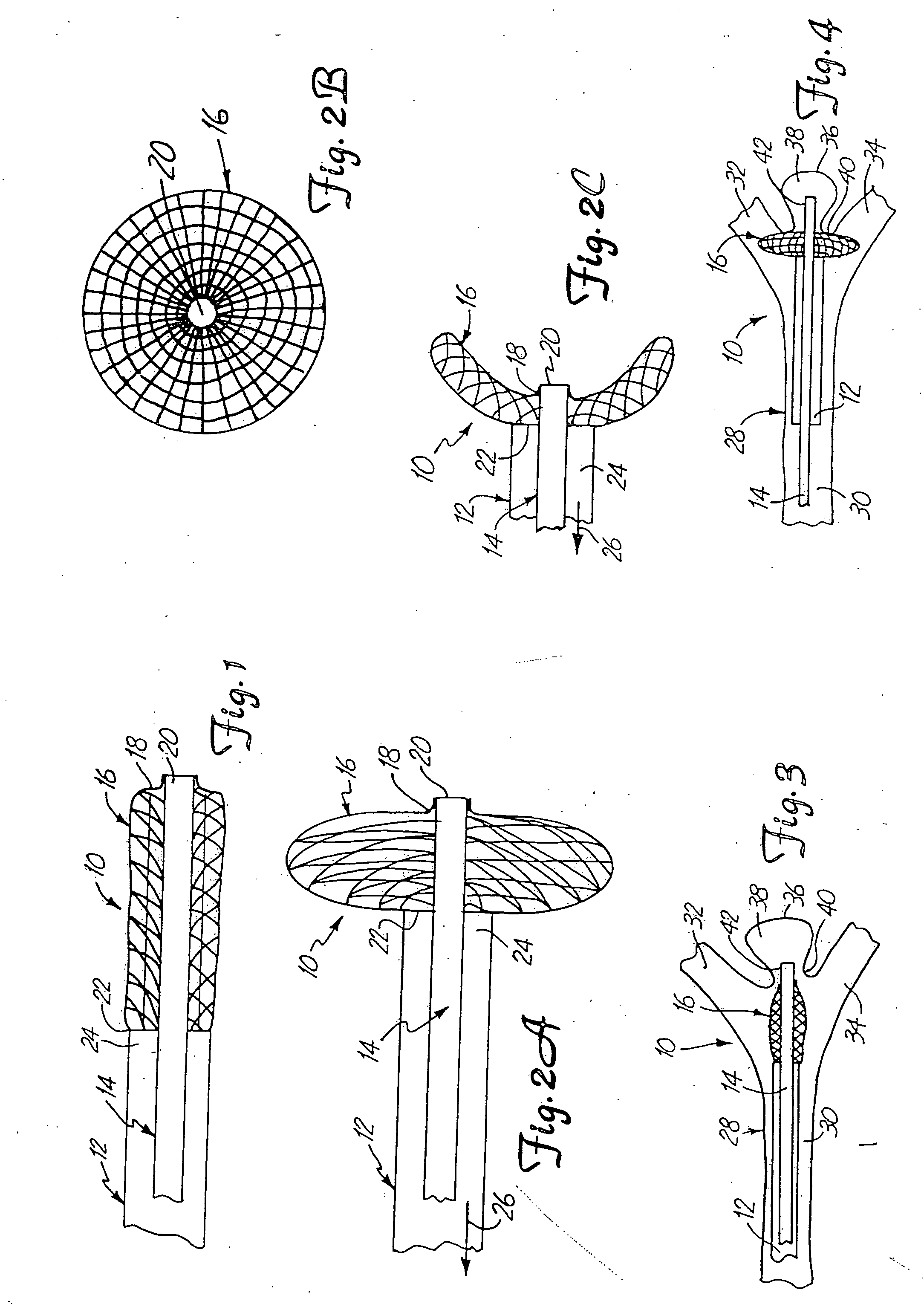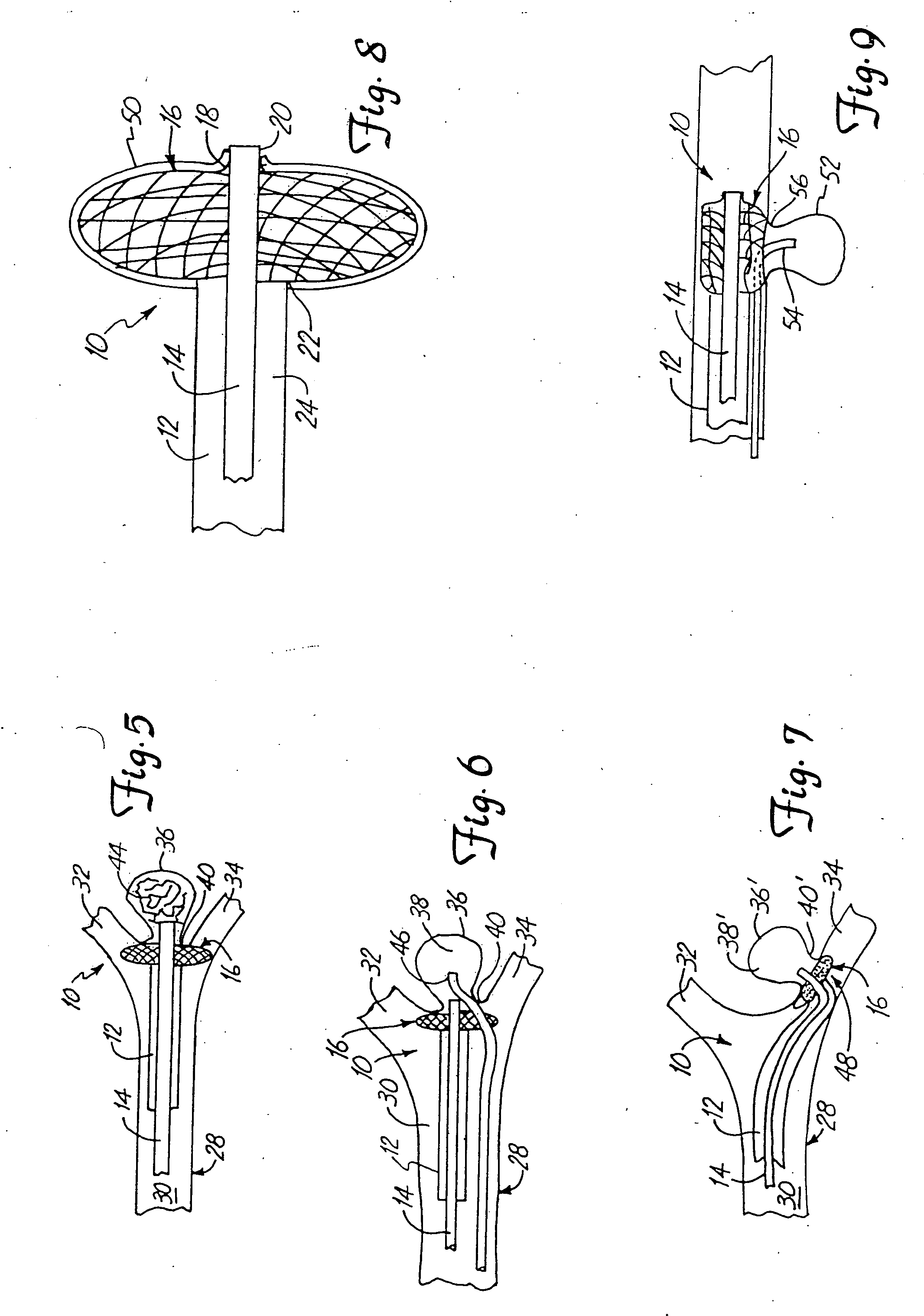Removable occlusion system for aneurysm neck
- Summary
- Abstract
- Description
- Claims
- Application Information
AI Technical Summary
Benefits of technology
Problems solved by technology
Method used
Image
Examples
Embodiment Construction
[0022]FIG. 1 is a side view of a portion of a neck occlusion device 10 in accordance with the present invention. Device 10 includes outer tubular member 12, inner tubular member 14, and mesh portion 16. Tubes 12 and 14 are preferably coaxially arranged relative to one another, and are longitudinally slidable relative to one another. Mesh portion 16 is attached, at its distal end 18, to a distal portion 20 of inner tubular member 14. Mesh 16 is attached at its proximal end 22 to a distal portion 24 of outer tubular member 12.
[0023] Mesh portion 16 is preferably formed of braided or woven filaments or fibers which are relatively flexible. Therefore, when tubes 12 and 14 are moved relative to one another, mesh portion 16 is deployed radially outwardly relative to the tubes 12 and 14. This is illustrated by FIG. 2A.
[0024]FIG. 2A shows similar items to those shown in FIG. 1, and they are similarly numbered. However, in FIG. 2A, inner tube 14 has been retracted in the direction indicate...
PUM
 Login to view more
Login to view more Abstract
Description
Claims
Application Information
 Login to view more
Login to view more - R&D Engineer
- R&D Manager
- IP Professional
- Industry Leading Data Capabilities
- Powerful AI technology
- Patent DNA Extraction
Browse by: Latest US Patents, China's latest patents, Technical Efficacy Thesaurus, Application Domain, Technology Topic.
© 2024 PatSnap. All rights reserved.Legal|Privacy policy|Modern Slavery Act Transparency Statement|Sitemap



